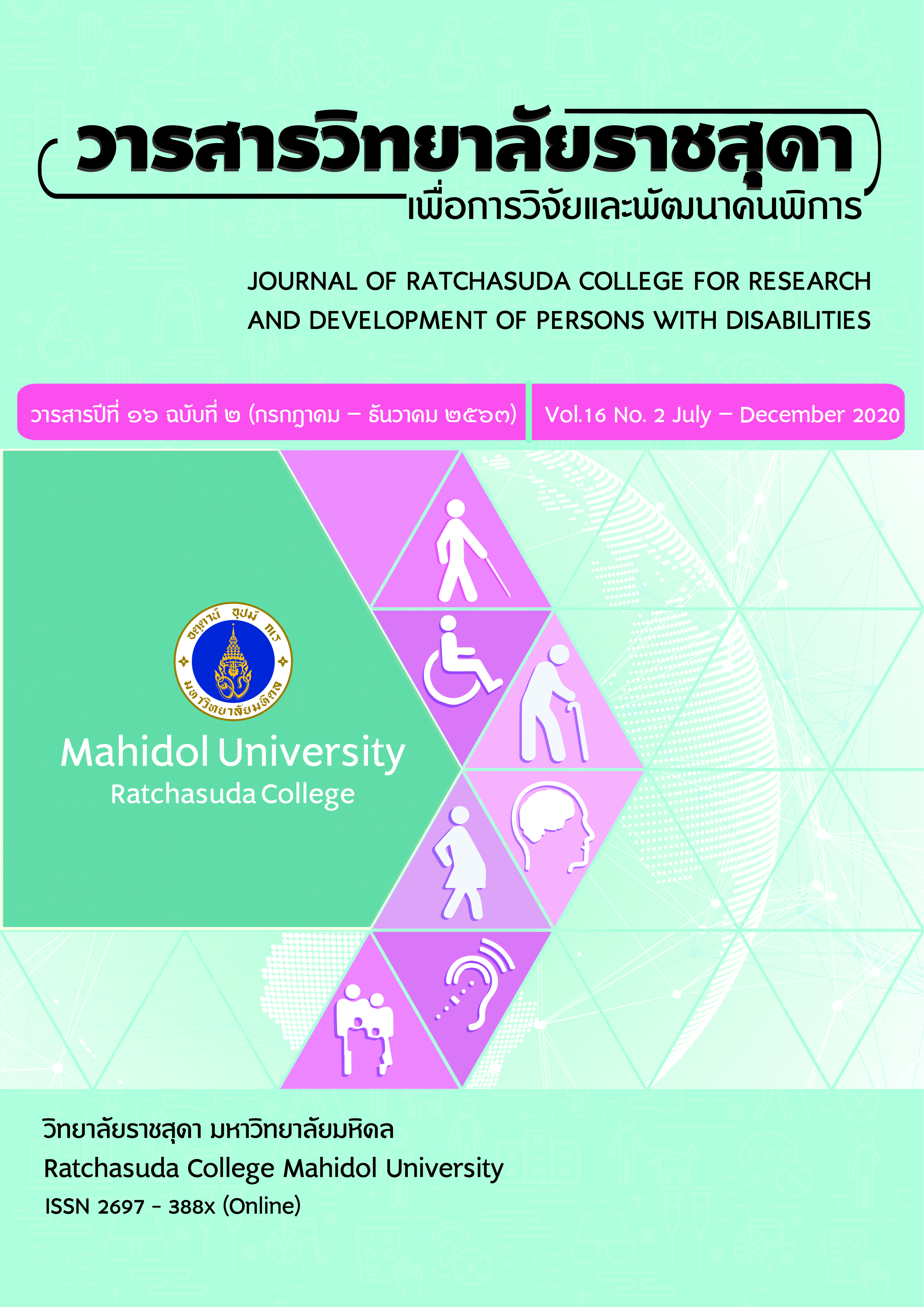Assessment of Standards for Performance Sign Language Interpreters 2018 (2561)
Keywords:
performance standard, sign language interpreterAbstract
The purposes of the study were to evaluate standards, criteria and indicators for sign language operations during B.E. 2561 (C.E. 2018). The study was conducted using both quantitative and qualitative methodologies. Questionnaires were used with the samples. The sampling method of the study was simple random sampling from 50 sign language interpreters registered with the Department of Empowerment of Persons with Disabilities, and focus group discussions with 13 academic dignitaries. The statistics used were descriptive, number, percentage, and content analysis. The results showed that standard evaluation results criteria and indicators for sign language interpreters were suitable and applicable. The Performance Standards for Sign Language Interpreters B.E. 2561 consists of five standards, 20 criteria and 20 indicators. The proportion scores for each standard are as follows: Performance Standard 1, complete translation or message conveyance (5 criteria and 5 indicators) 50%; Performance Standard 2, respect of sign language interpreter’s and clients' dignity and rights (3 criteria and 3 indicators) 15%; Performance Standard 3, own sign language skills development (3 criteria and 3 indicators) 9%; Performance Standard 4, being a good role model in the sign language interpreter profession (7 criteria and 7 indicators) 14%; and, Performance Standard 5, compliance with relevant regulations (2 criteria and 2 indicators) 12%.
Downloads
References
Department of Empowerment of persons with Disabilities. (2017). The plan for the development of the quality of life of the disabled, 5 B.E. 2560-2564 (2017-2021). Bangkok : Department of Empowerment of persons with Disabilities.
Haualand, H. & Allen, C. (2009). Deaf People and Human Right. World Federation of the Deaf and Swedish Nation Association of the Deaf, 2009. Online availabal on http://www.wfdeaf.org. retrieved May, 2018.
Kachondham, P., & Chaiwatthanakunwanich, S. (2009). The Study of Sign language interpreter service system. Bangkok : Department of Empowerment of persons with Disabilities.
Napier, J. (2004). Sign Language Interpreter Training, Testing, and Accreditation: An International Comparison. American Annuals of the Deaf, 149(4), 2004
Sri-on, J. (2000). User manual Sign Language Interpreter in the classroom. Nakhon Pathom : Ratchasuda College, Mahidol University.
Tammasaeng, M. (1996). Sign Language Interpreter: Documentation for Sign Language Interpreter Project. Bangkok : Foundation of the Deaf under the Royal Patronage of Her Majesty the Queen and Setsatian School For the Deaf Under the Royal Datronage of His Royal highness Crown Prince Maha Vajiralongkorn.
World Health Organization. (2005). Estimated global prevalence of hearing impairment by sex and severity level, 2005.
World Health Organization. (2006). Deafness and gearing impairment. Fact sheet no. 300, 2006.
Downloads
Published
How to Cite
Issue
Section
License
บทความที่ได้รับการตีพิมพ์เป็นลิขสิทธิ์ของวารสารสถาบันราชสุดาเพื่อการวิจัยและพัฒนาคนพิการ






